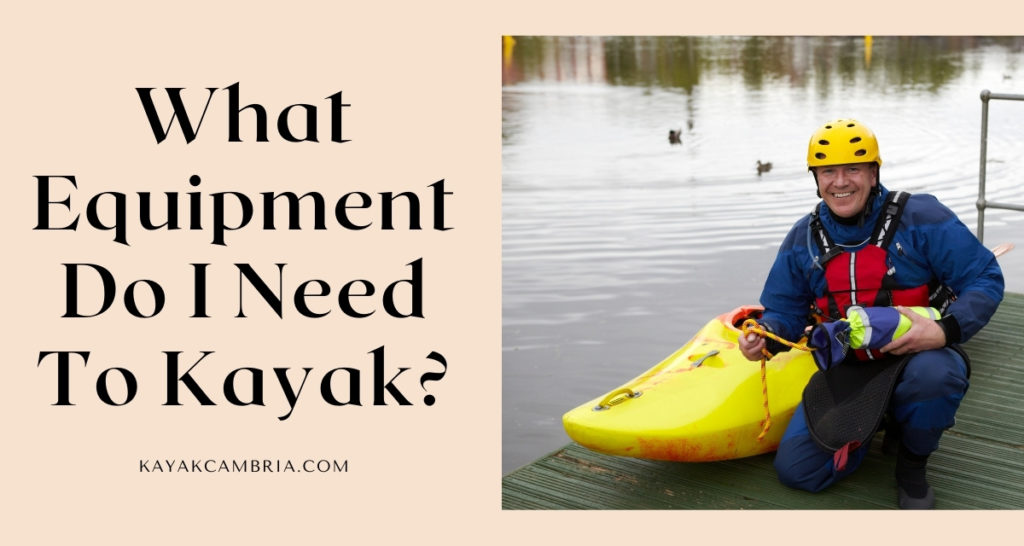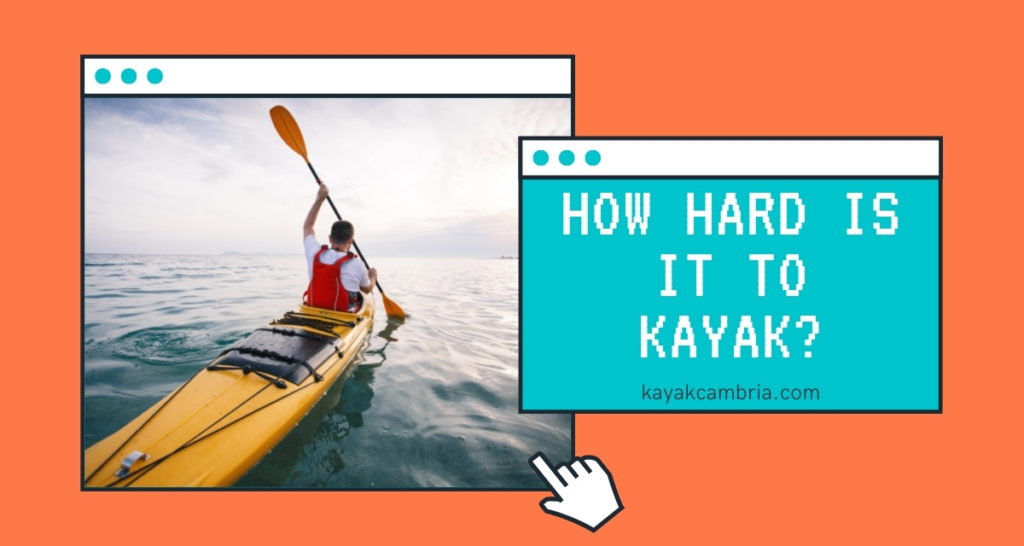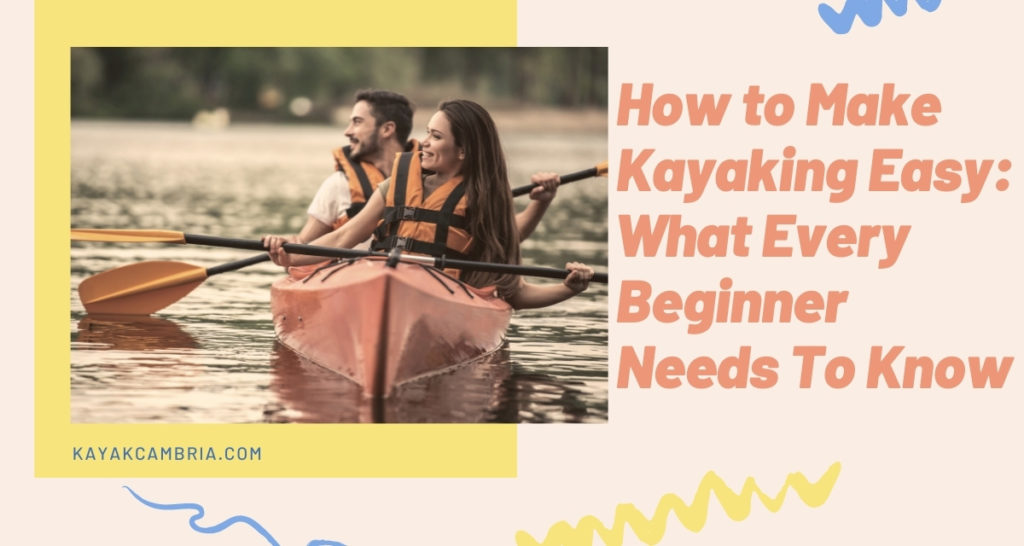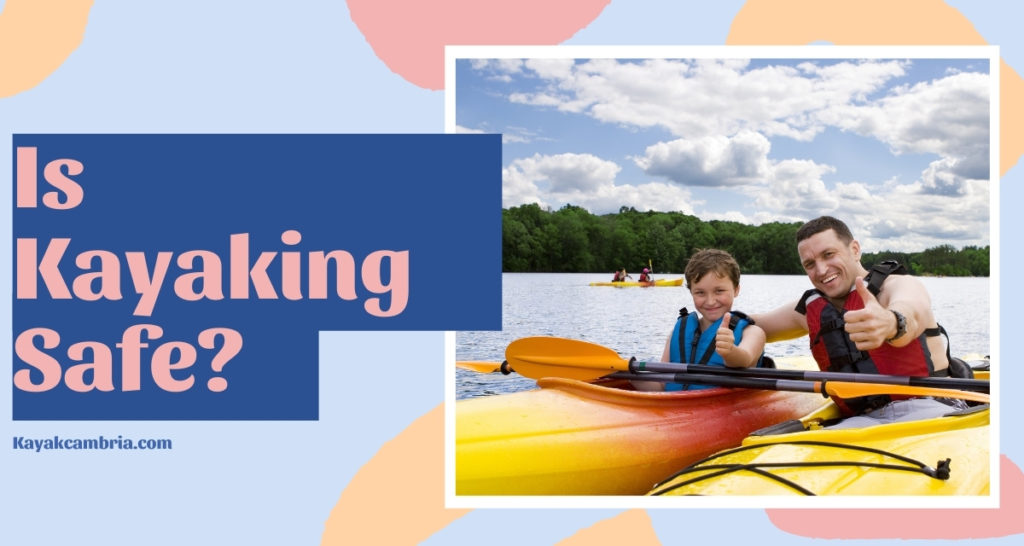Is kayaking hard? This is a question that I get asked all the time. The answer is NO! Kayaking can be as easy or difficult as you want it to be, depending on what type of boat and gear you use.
As a newbie kayaker, you may be wondering if kayaking is hard. Kayaking is not as difficult as it might sound, but it might be difficult to do Kayaking with Dog! It is important that you have the right equipment and know what to expect before getting in the water. This blog post will provide some insight into whether or not kayaking is easy for beginners and how they can get started.
In this blog post, we will explore some of the different options available for beginner kayakers to help them find the right fit for their needs and skill levels.
Contents
What Equipment Do I Need To Kayak?
It’s best for beginner kayakers to start with a recreational sit-in or sit on top kayak because they are less expensive and can be used in a variety of different waters.

- Personal Flotation Device or “PFD”: This is the most crucial protective gear you can ever wear. It doubles up as a flotation device in case of emergency. the recommended lifejacket is U.S. Coast Guard Type III personal flotation devices (PFDs).
- Kneepads or rubber pants: This helps in preventing any type of injury which could cause you to get out of your Kayak, such as cuts on the legs from rocks or falls into shallow water without being able to push off the bottom of the kayak.
- Paddles: You will need two paddles in order to propel your Kayak, and you can get them either with a single or double blade. If it is good enough for you then there are plenty of online stores which offer these blades at very reasonable prices.
- Helmet: You will need to protect your head and face from the sun. And as always prevention is better than cure.
- Wetsuit: You can get these suits in many different thicknesses, but the thicker ones are generally more comfortable and warmer.
- Dry Bag: You will need to keep your phone safe from water as well as food for when you take breaks. You also want to make sure that any other important documents or electronics which you may be carrying with you stay dry too.
- Paddle Leash: These leashes are a great way of securing your paddle so that it doesn’t end up out of reach or lost at sea.
- Knife/Swiss Army Knife: You may need to use this for any emergency situation where you are stranded on land.
- First Aid Kit and Safety Equipment: This kit should contain a range of items that might be needed in an emergency, such as painkillers, antihistamines, and iodine tablets.
- GPS Tracker: This tracker will come in handy if you want to stay in touch with friends and family.
- Kayaking gloves: These gloves offer a lot of protection against the cold and will help you keep hold of your paddles.
- Spray Deck or Spray Skirt: This is attached to the boat at the back and helps deflect water spray.
How Hard Is it To Kayak?
Kayaking is not as difficult as it might sound! It is important that you have the right equipment and know what to expect before getting in the water. There are a lot of things that make it hard for beginners to even try. So, I will try to mention a few of the Hurdles which a beginner’s face:

1. Kayaking isn’t fun in high winds and strong waves:
In high winds and strong waves, the kayak can be challenging to control. The best way to get through this is by having a good spray skirt so that water doesn’t come in but it also allows you to roll with the waves or paddle on top of them.
2. Kayaking is difficult to learn and requires a lot of strength and athleticism
This is not always the case. With some training, anyone can learn how to kayak and get out on the water with ease.
3. Kayaking requires a lot of expensive gear
While it may be desirable to have all high-end equipment for your first trip or two, most beginners will only need the basics in order to enjoy spending time afloat: A boat that fits their size as well as paddles.
4. Kayaking is only for those with a lot of time on their hands
With the advent of online classes and many different social media communities, kayakers nowadays can enjoy this hobby without spending more than 15 minutes at a stretch.
5. Kayaking is too dangerous
The truth is that while there are risks in any sport, they are minimized when one follows all safety protocols as well as wearing the proper gear.
6. Is kayaking safe for non swimmers?
While you may need some assistance early on in your paddling career, anyone who learns how to correctly paddle will also learn how to self rescue themself should something happen.
How to Make Kayaking Easy: What Every Beginner Needs To Know
So, now I think I have busted enough myths. Now, let me guide you from my experience on how you can make Kayaking easy.

1. Choosing the Right Kayak
It is important to choose a kayak that is right for your height and weight. The reason being, if you are too heavy or tall the boat will not be able to handle it. There are few other things that you should consider before getting a Kayak:
a. What size kayak do I need?
The size of your Kayak is one of the most important things that you should consider a lot as a beginner.
You may be too tall or heavy for a small Kayak. The length and width of a kayak will affect how difficult it is to steer and paddle.
For beginners, shorter kayaks is easy as it is small and requires less strength to paddle.
This is one of the most important things that you should consider before buying a kayak. If your weight will be over a certain amount then it may not work out very well for you, either way, so make sure to check this carefully.
b. Which kayak Type is more stable?
There are two main types of Kayaks.
The first is the sit-on-top kayak, which is more stable and it allows you to see underwater easily but it doesn’t allow for storage or fishing
While the other one is a traditional kayak that has much less stability and visibility while on water but you can store your gear in it or fish.
I personally enjoy the sit-on-top kayak as it is more stable and I can see underwater easily, but if you’re looking for storage or fishing then a traditional one may be better for you.
For begginers I would recommend the sit-on-top Kayak, it is much easier to use and I find that beginners do better with them.
In the end, whatever kayak you choose just make sure it is safe for paddling and have fun!
c. Tandem or single kayak?
Kayaks come in two shapes, either tandem or a single kayak which is used for solo paddling. I would recommend starting with the human-powered sport of kayaking if you have never done it before because it’s easier to get into than paddle boats and canoes.
If you’ve got a partner to paddle with, tandem kayaks can be great fun. Most kayak brands even offer them for sale.
2. Learning How to Kayak
There are alot of course available on the internet that are free, but also costly courses that teach you how to kayak. Learning how to Kayak is a lifetime experience and it’s something I recommend everyone try at least once!
Don’t be intimidated by the cost of these courses as this is such an amazing skill to learn and for many people they come across bottleneck moments that they have been struggling with for years and the course is just what they need to keep moving forward.
I would recommend doing a google search of “free kayak lessons” or do an internet search on how to learn how to Kayak, I’m sure you will find many different options! here I am linking some of the best free and premium courses available for a begginers to learn Kayaking.
a. Kayak Paddling Techniques
Learning Different kind of paddling techniques like the paddle draw, claw stroke, freestyle and more are a great way to get better in kayaking.
As you can learn all these pro techniques but you should know the basics of paddling and to do this just get a kayak paddle and put it on the water, lean forward, push with your legs like you were running in a straight line. Keep doing this until one of two things happen: either you have reached all the way to shore or got tired out.
A helpful technique for turning your kayak is to use the paddle on the side you want to turn towards.
Tip: Try using both hands, one at a time or with someone else paddling in tandem
There are few strokes that you can use to navigate:
The paddle draw: lean forward and pull the paddle out of the water, to bring it back in place push your body away from the kayak
The claw stroke: this is a variation on paddling techniques, where you move one hand at a time as if pulling yourself along by your fingertips
Freestyle strokes: when using these strokes you have to find a rhythm, and blend the strokes of your paddle together
Backstroke: this is when you are not using any force and pushing with one hand to keep yourself on the course (this stroke can be used if there’s no wind)
Breaststroke or the flywheel: if you have done the back-arm movement then start to move your other hand, continuing the circle until its time to switch arms
Sliding strokes: these are used when you have to move the kayak over a short distance in a straight line.
Sculling: this stroke is similar to sliding strokes but you use your paddle like an oar on water, where you twist it and sweep around.
Edging or paddling from shore: if there’s no wind then its possible to push off of.
b. Choosing the Right Kayak Paddle Length
Choosing the right kayak paddle length depends on your height and weight. If you are shorter, longer paddles might be better for more leverage so it’s easier to push against the water with each stroke.
The width of the beam also comes into play in how wide a sweep can be made from side to side. Appropriately sized kayak paddles can have a range of lengths, putting some at 210 cm and others up to 260cm.
I have added a list below which will help you to find the perfect length as pe your height.
Kayaking is a safe sport if you know what you are doing. But some forms of kayaking can be dangerous, especially for beginners.
Is Kayaking Safe?

It is important to remember that kayak paddles are big and heavy. If you hit someone with one of them then it could cause some serious damage or even death.
If a beginner tries to go over an obstacle like a rock in the water too quickly while they are still learning how to tackle a rock, they are liable to flip and if that happens then it can be hard for them to get back upright.
It is also important to know how deep the water is before you go kayaking in an area with a low-lying rock because there could be hidden dangers like currents or underwater obstacles which could cause injury.
When beginners come up against these problems, they may need to get out of the kayak and use a paddle as an oar.
Will I capsize?
The answer to that is maybe.
It all depends on what you’re doing and how good your technique is.
A beginner who doesn’t know how to kayak will have a much higher risk of capsizing their boat than someone who has been kayaking for years.
There are plenty of other ways that beginners can get out of their kayaks, but the key thing to remember is that it will be difficult for them to get back upright.
FAQs Realted to Hardship of Kayaking
1. What Are The Basic Skills I Need To Know?
The basics of kayaking are simple: you need to be able to get into the boat and move it with your paddle. But what about everything else? You might want to do a little research on paddling styles before heading out!
2. Kayaking is difficult to learn and requires a lot of strength and athleticism?
In one word the answer is “NO”, it is not difficult to learn how to kayak if you follow a few simple rules, and it is not that hard for beginners. You just need to know the basics.
And for the second part of the question, the answer is the same “NO”, you don’t need a lot of strength to kayak but you do need to be physically fit. Kayaking is a sport that requires strength, endurance, and agility just like all other sports.
3. Kayaking is too strenuous for ordinary women. Does it cause a lot of pain?
This is not true, you can always find different ways to make it easier on your body and enjoy the sport. If you have any injuries or limitations outside kayaking then try things like rolling sideways while paddling, pedaling an exercise bike in a pool, or practicing the movements of kayaking with a noodle.
4. Kayaks only work in calm, flat waters?
There are many different types of boats that people use when it comes to enjoying themselves out on the water. Some need more open spaces than others but none require calm or flat conditions.
Verdict – Is Kayaking Hard?
Kayaking can be a hard sport for some people to get into. It requires endurance, strength, and complete body control in order to stay upright on the water while moving forward without tipping over. Someone who is not used to this type of exercise or doesn’t know how their muscles work may find it difficult at first but they will eventually learn as long as they are patient with themselves and don’t give up. Once you have mastered kayaking’s basics then there are many ways that you can enjoy yourself and explore new places by boat!

